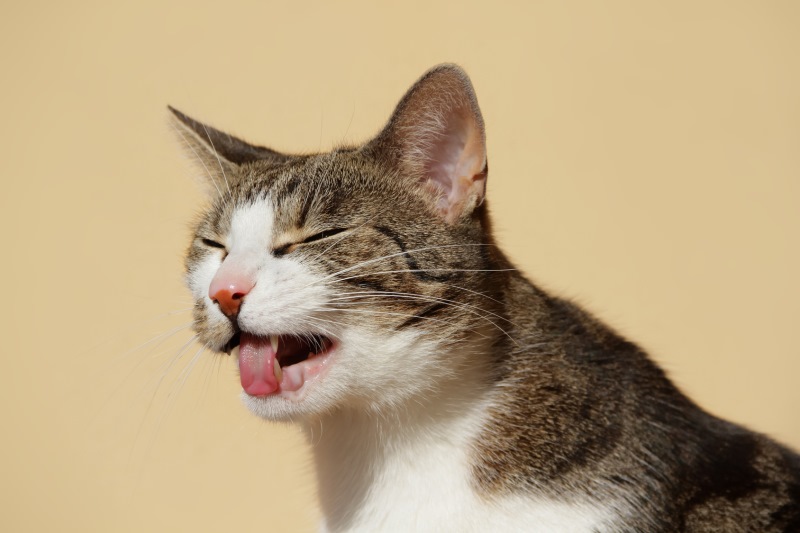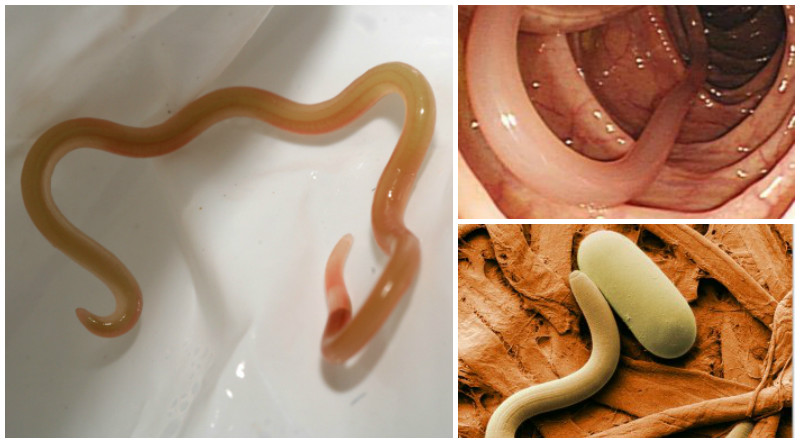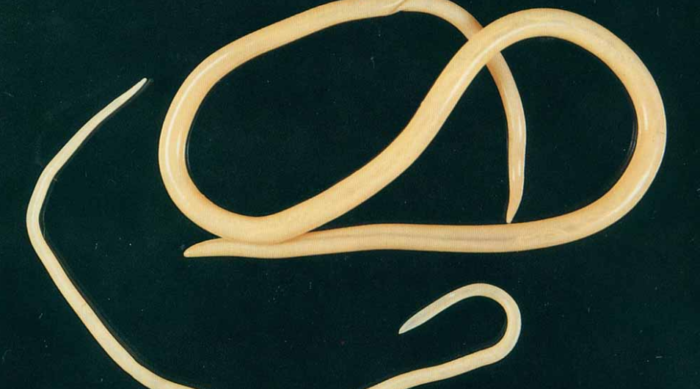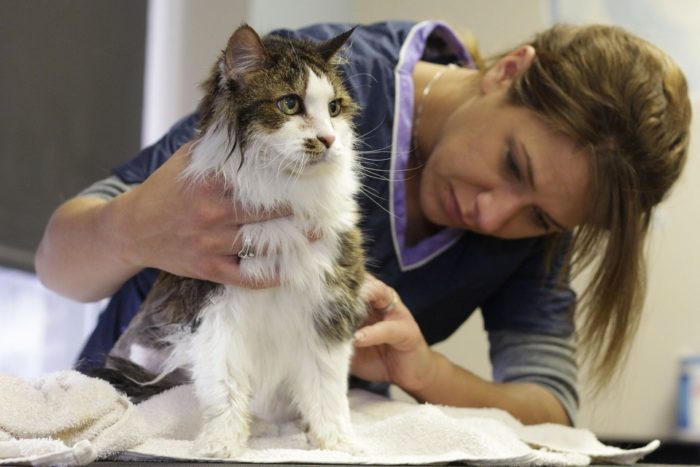In helminthic diseases in cats often there are no symptoms. If the animal is not in the most sad physical form, then its body can still resist the activity of parasites, making life as difficult as possible for them.
But all this does not apply to the period of migration of nematode larvae. At this time, coughing in a cat with worms becomes one of the most obvious clinical signs, which makes it possible to assume with sufficient probability that a parasitic disease exists.
Contents
Features of the life cycle of parasites
Note that cough is a specific symptom of the ailments caused by ascarids. It’s about the life cycle of these parasites. We will consider it. So, let’s start with the larva entering the digestive tract of the cat.
It would be logical to assume that the young parasite remains there to grow to an adult. But it happens quite differently. The larva gnaws through the wall of the intestines and gets to the nearest large (or not too) blood vessel. There she again gnaws, trying to find herself in the general bloodstream. When this happens, the parasite sets off on a long journey, with its end point being the lungs of the animal.
When this happens, the larva again begins her favorite occupation – she gnaws. Gnaws the walls of the alveoli, making its way into the lumen of the organ. Sooner or later she succeeds, after which the parasite goes to the path along the bronchi and the alveoli. He does not lose time: all the accessible tissues the larva will try “for a tooth.” Simply put, the larvae of parasitic nematodes feed on mucous membranes and blood, and they do so so actively that the animal can quickly have serious health problems.
And it’s not just a cough? Why does the surface of the lungs cover a layer of special epithelium? It performs a dual function: on the one hand it “absorbs” oxygen and gives back carbon dioxide. On the other hand, it protects the lungs from pathogenic and conditionally pathogenic microorganisms.
After all, the air breathed by us and our pets is not always sterile. If this protective layer is damaged by the sharp teeth of the larvae of parasites (and their chitinous teeth are indeed very sharp), the pathogenic microflora gets an excellent chance of rooting in the lungs. And microbes use it for 100%!
The inflammatory process is rapidly developing. At best, the animal is treated with moderate bronchitis, which at any time (with a further decrease in the immune status) can easily turn into pneumonia. Weakened animals and kittens often die from this.
Further Processes
But the larvae in the lungs do not remain forever. After a two-week period, a special “timer” is triggered in their bodies, after which the body of the parasite begins to excrete special substances, which further annoy the already tortured lung tissue. As a result – the strongest cough, which sometimes results in vomiting. What is it for?
It’s simple. It is with sputum that the larvae again enter the oral cavity, and thence again into the digestive tract. There they already remain forever and grow until they grow to the state of adults. In the lungs, inflammatory processes continue. And if the cat is strong enough, then everything comparatively quickly ends: the animal “recovers”, coughing does not bother him. But in the case of kittens and old pets, things can end much more sadly. Simple inflammation gradually passes into bronchitis, and there is not far from pneumonia.
Even at home it is easy to learn about the beginning of this stage, since to the barking and hard cough, the deterioration of the general condition of the pet is added, the overall body temperature rises, the animal refuses to feed and apathetically. If you see such signs in your cat, rather take her to the vet! If you do not help your pet, she may well die.
But are they only ascarids?
Is it possible that only parasitic nematodes can be blamed for the appearance of a cough? No, although they are the most common parasites in cats. Other reasons are flat parasites, tapeworms. Their larvae do not migrate through the body, but a cough can still appear … Why not?
Here you need to make a short digression into the physiology of the cestodes. The fact is that these parasites in fact completely lack digestive system. Nutrients they absorb the entire surface of the body. Energy organism parasites is extremely “uneconomical”, splitting ATP by anaerobic principle. This leads to the release of a huge volume of toxic decomposition products. They are sent exclusively to the digestive system of the unfortunate cat. There they are absorbed and enter the circulatory system.
If the worm is one and your pet’s liver is in a relatively normal state, its body will for some time cope with intoxication. Otherwise, it will constantly increase. And one of the consequences of severe intoxication is the deterioration of the cardiovascular system. As a consequence – stagnation in a small circle of circulation and swelling, including pulmonary edema.
The first sign of the wrong is all the same cough. If the edema has already developed sufficiently, when coughing out of the mouth of the animal begins to come out scraps of frothy, bright white foam. In such situations, the animal should be taken immediately to the vet, since the slightest delay can cost him his life!
Therapy
Treatment is reduced to two tasks: to stop coughing and, probably, inflammatory process, and also to cope with parasites, because without it all work can be meaningless. To cope with negative processes in the lungs, the cat can be prescribed antibiotics of a wide spectrum of action, as well as anti-inflammatory corticosteroids.
But! With the latter you need to be careful if a flat worm “sits” in the bowels of a cat. From such recharge, it can begin to grow faster, which is accompanied by the release of an increased number of toxic compounds.
The worms themselves are eliminated using any suitable preparation for this. Fortunately, there are very many on the market. To appoint a suitable drug, the veterinarian pre-conducts a range of diagnostic studies in order to accurately identify a particular type of parasitic worm. As a rule, the further restoration of the organism of the pet proceeds quickly enough and without special problems. The main thing – during this period to protect it from repeated infection by parasites, for which the owner must strictly follow the instructions that he will receive from the veterinarian.





















